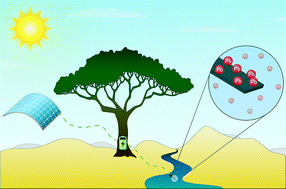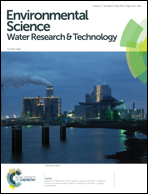Extracting metal ions from water with redox active biopolymer electrodes†
Abstract
Renewable, environmentally friendly and cheap materials like lignin and cellulose have been considered as promising materials for use in energy storage technologies. Here, we report a new application for biopolymer electrodes where they can also be simultaneously used as ion pumps to purify industrial wastewater and drinking water contaminated with toxic metals. A ternary composite film consisting of a conducting polymer polypyrrole (PPy), biopolymer lignin (LG) and anthraquinonesulfonate (AQS) was synthesized by one-step galvanostatic polymerization from an aqueous electrolyte solution. X-ray photoelectron spectroscopy (XPS) and scanning electron microscopy-energy dispersive X-ray spectroscopy (SEM-EDX) techniques revealed that lead ions can be extracted from a neutral aqueous solution containing lead ions by applying a potential, and can be released into another solution by reversing the polarity of the applied potential. Electrochemical quartz crystal microbalance was used to quantify the amount of metal ions that can be extracted and released.


 Please wait while we load your content...
Please wait while we load your content...